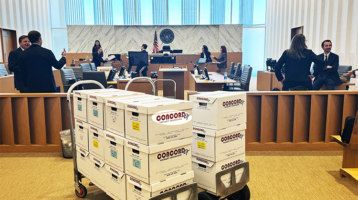[mp_row]
[mp_span col=”12″]
[mp_text]
Electronic Discovery
Native Production vs Bates Numbering
 A key advantage of native production is that it spares parties the burden of selecting and collecting from among hundreds of application metadata fields. Each file produced natively carries its peculiar complement of application metadata. System metadata, essential for classifying and sorting large volumes of ESI, would be produced in load files. The following fields should be required to furnish for all ESI:
– Identifier: The unique production identifier of the item.
– Source Name: The original name of the item or file when collected from the source custodian or system.
– MD5 Hash: The MD5 hash value of the item as produced.
– Custodian: The name of the custodian or source system from which the item was collected.
– Source Path: The fully qualified file path from the root of the location from which the item was collected.
– Production Path: The file path to the item from the root of the production
– Modified Date: The last modified date of the item when collected from the source custodian or system.
– Modified Time: The last modified time of the item when collected from the source custodian or system.
– UTC Offset: The coordinated universal time/Greenwich Mean Time offset of the item’s modified date and time.
– Additional fields were required to accompany production of e-mail messages, including “to,†“from,†“cc,†“bcc,†“date sent,†“time sent,â€
– “subject,†“date received,†and “time received.â€
– Also required for images of paper documents:
– Beginning Identifier: The beginning unique production identifier for the first page of the document.
– Ending Identifier: The ending unique production identifier for the first page of the document.
– Page Count: The total number of pages in the document.
– Location: The source box or other location identifier needed to trace the document to its source.
Call Concord DT to discuss your options……
BEFORE the “meet & confer†conference
The “meet and confer†conference for electronic discovery has moved from a nice-to-have to a requirement under the amended Federal Rules of Civil Procedure. A major component of preparing for a 26(f) meet and confer conference is a “map†of the litigant’s ESI content: where it is, what it is, how to preserve it, how to collect it, etc. This defensive requirement can be turned into a strategic advantage when counsel is well informed as to the location and nature of ESI, as well as the costs necessary to produce it.
•Emmerick v. S&K Famous Brands, Inc., 2007 U.S. Dist. LEXIS 59147 (E.D. Tenn. Aug. 6, 2007)
•O’Bar v. Lowe’s Home Centers, Inc., 2007 WL 1299180 (W.D. N.C. May 2, 2007).
[/mp_text]
[/mp_span]
[/mp_row]


